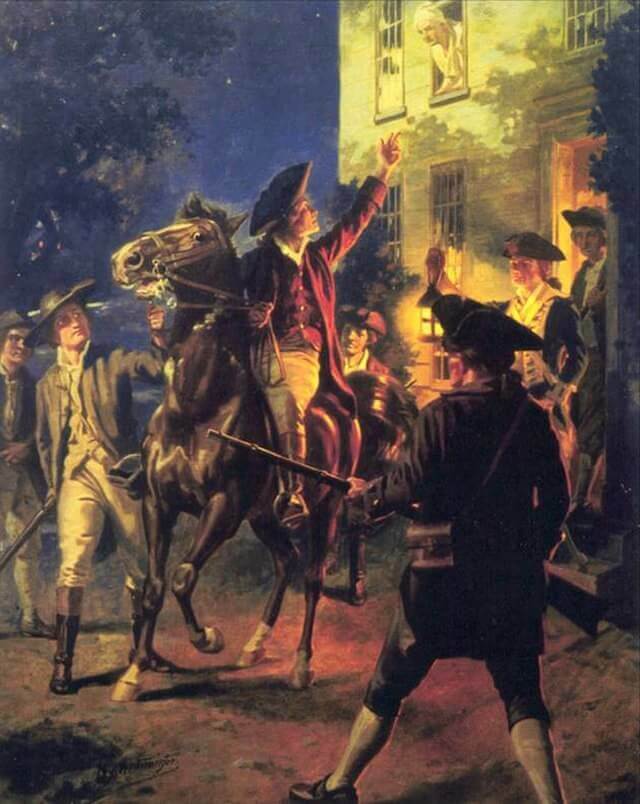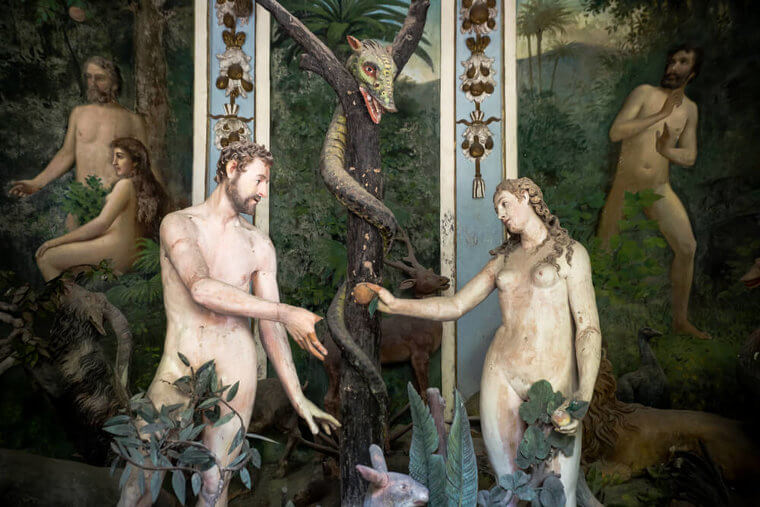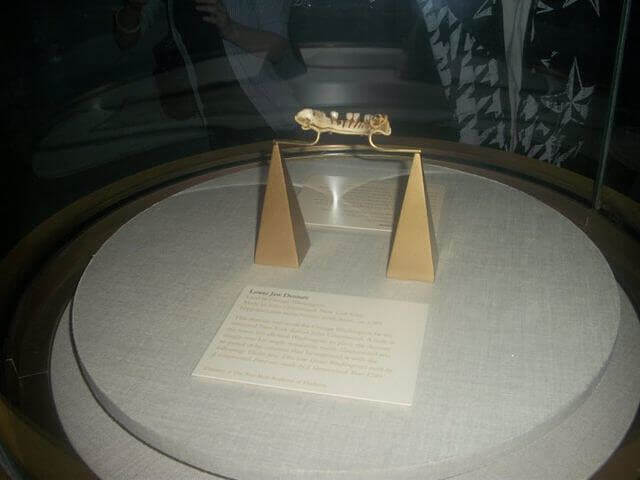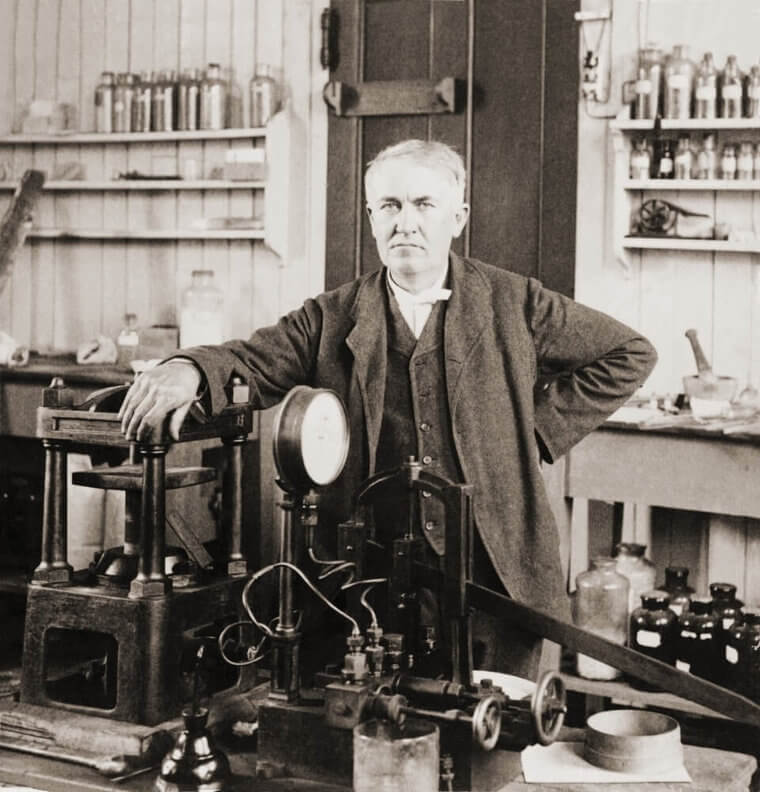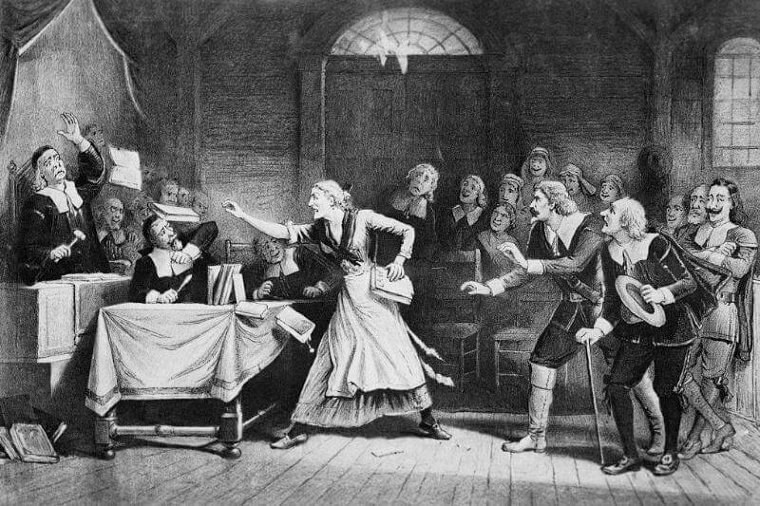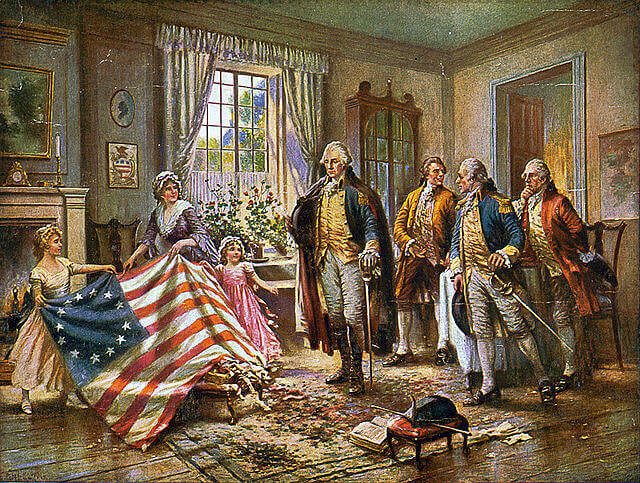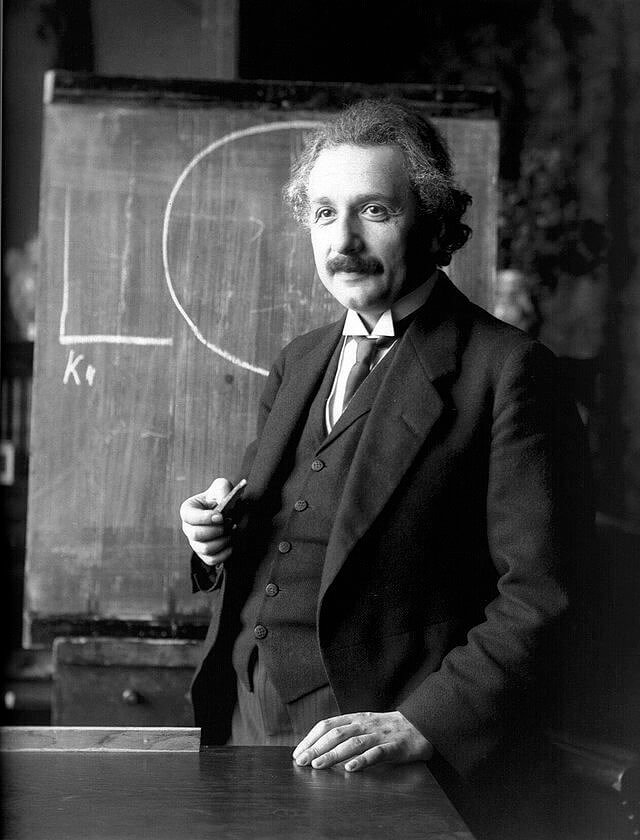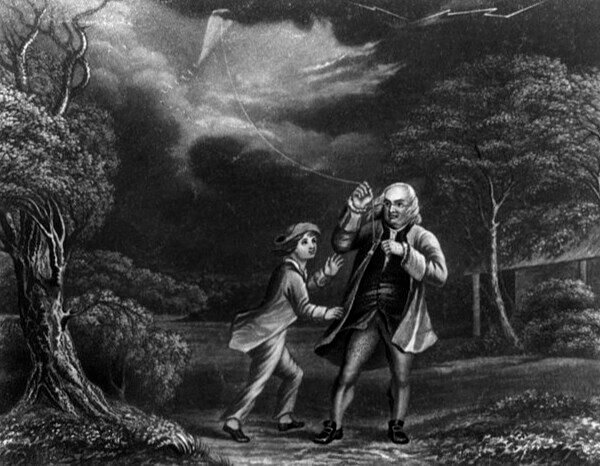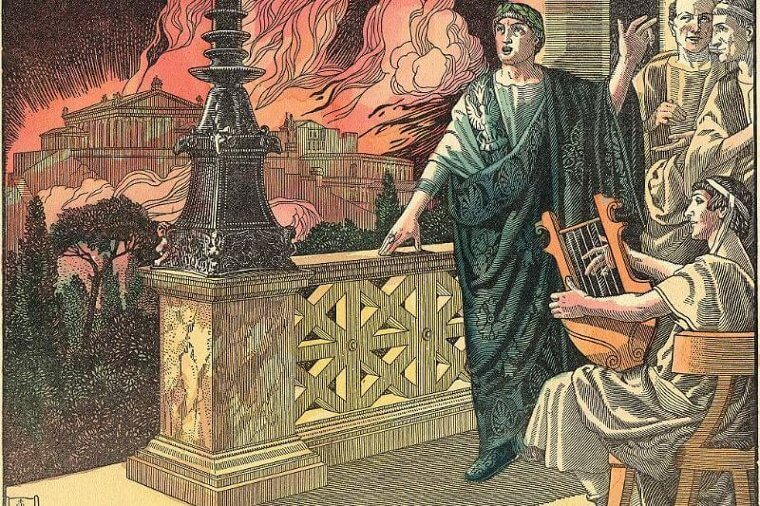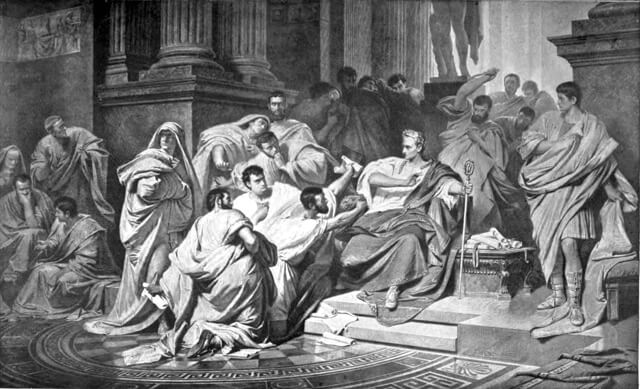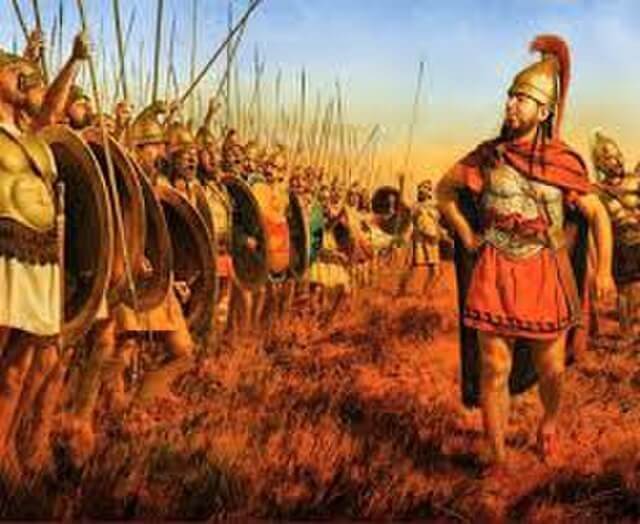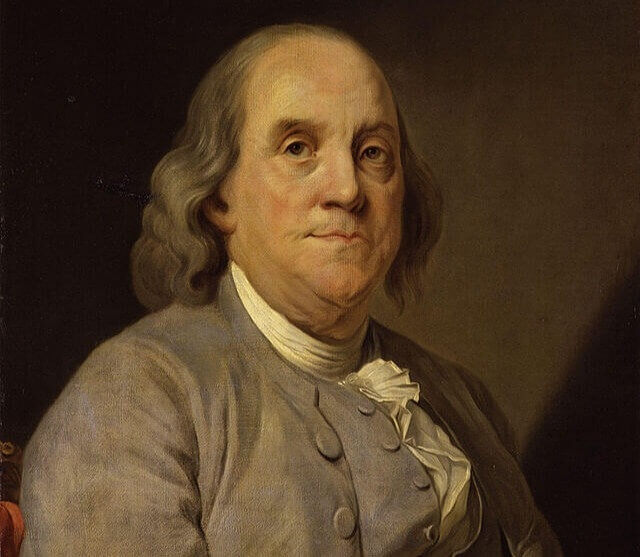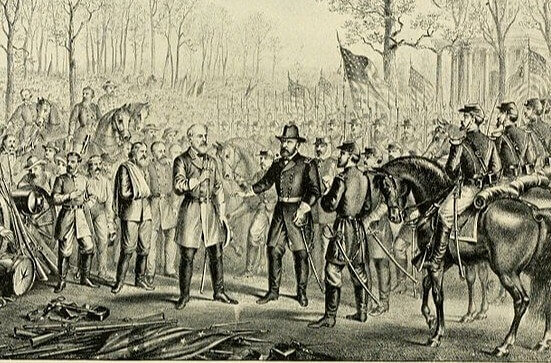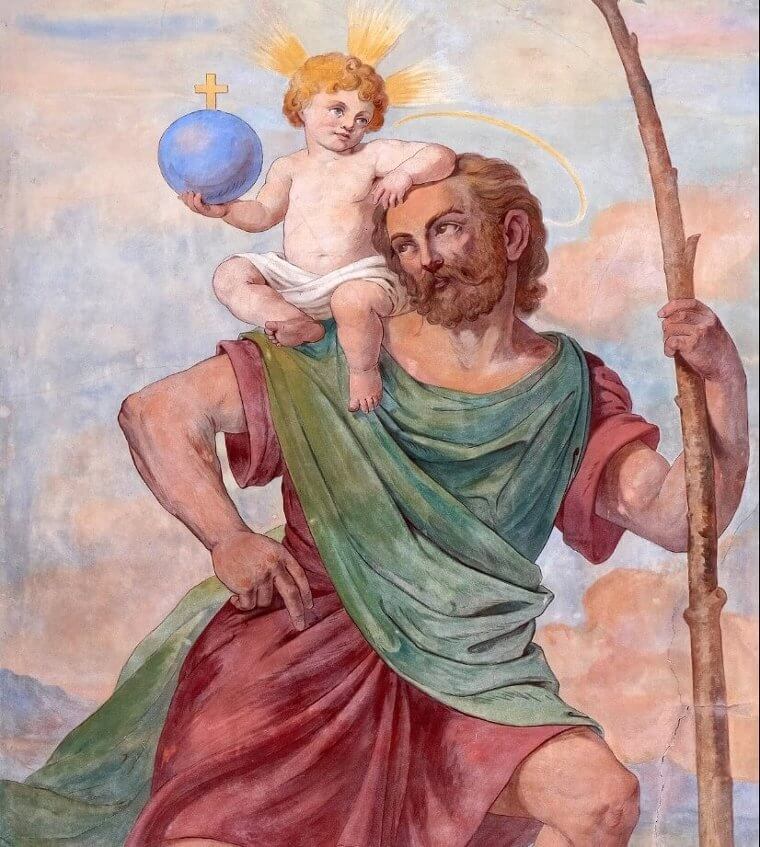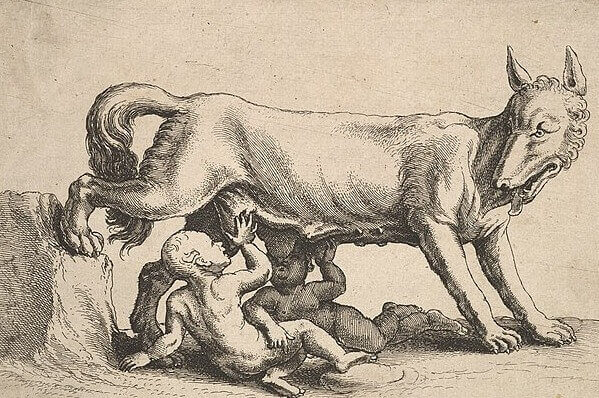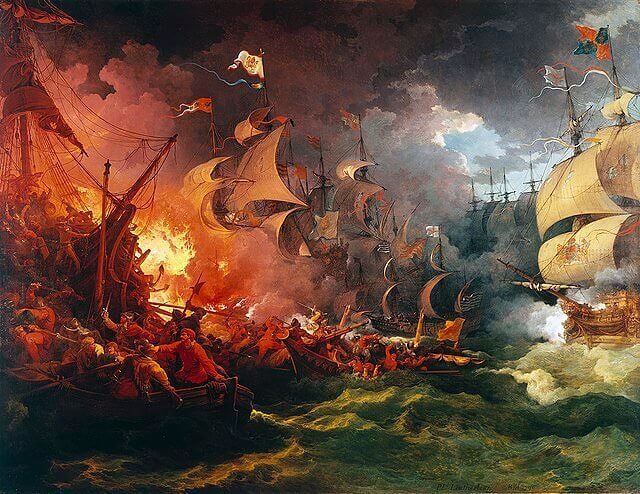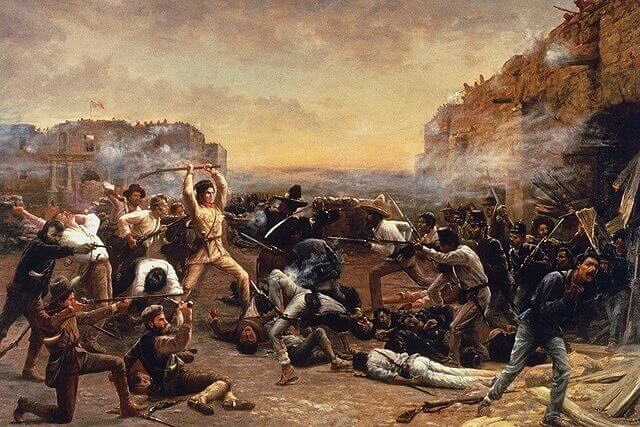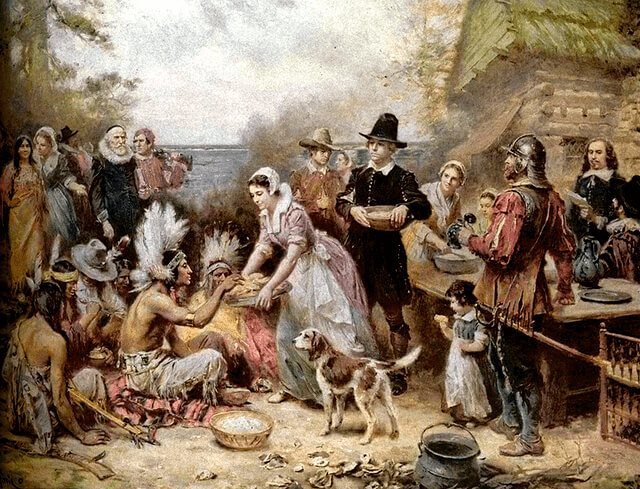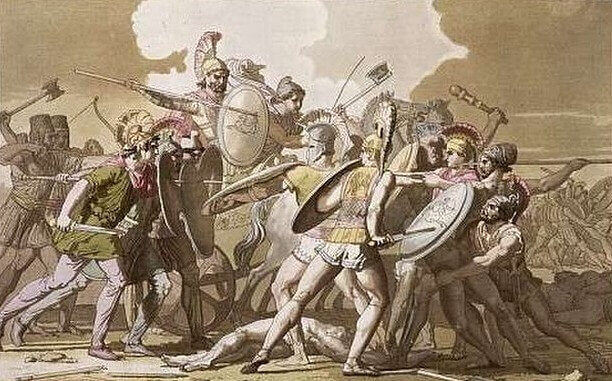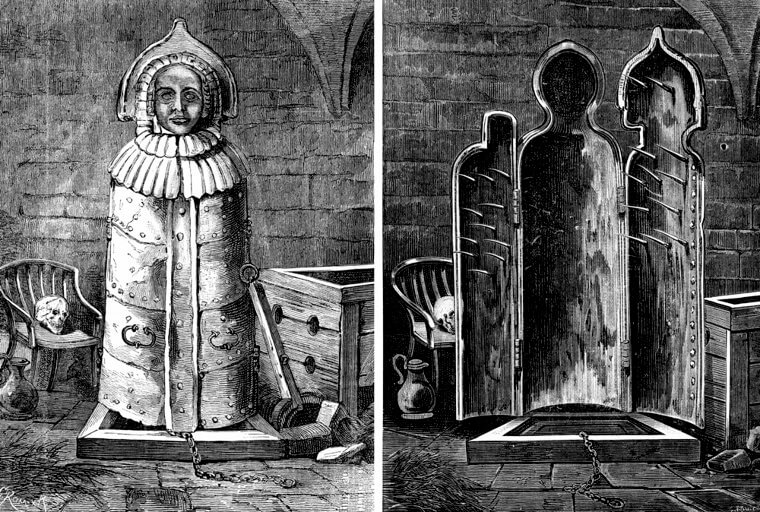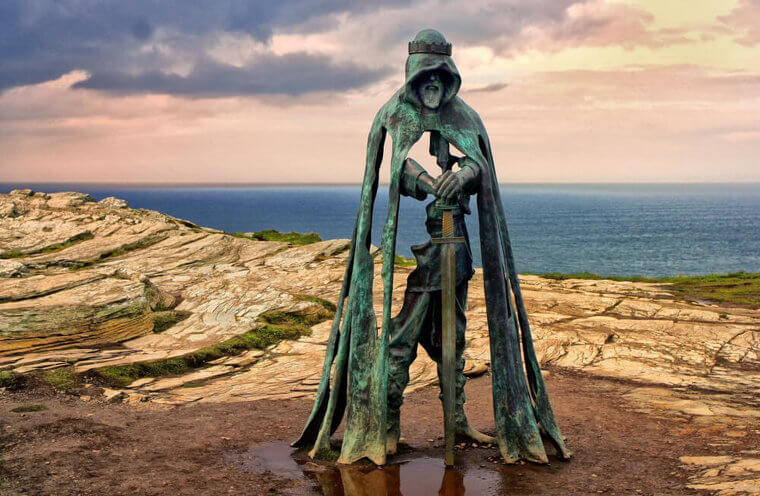1. Paul Revere Never Had A Midnight Ride
"The British are coming. The British are coming!" The story of Paul Revere riding through Massachusetts warning American colonials that the British were coming got its origin from an 1860 poem by Henry Wadsworth Longfellow.
Although the poem described this moment, it wasn't a historical reflection on Paul Revere, but a topical warning about America breaking apart shortly before the Civil War. In actuality, Paul Revere didn't receive the lantern signals; he was the one who sent them. Therefore, he wasn't the solo rider.
2. What Really Happened To Van Gogh's Ear?
If there is one fact everyone knows about Vincent Van Gogh, it is that he supposedly cut off his ear and sent it to his brother. However, that is not entirely true. Van Gogh didn't actually cut off his whole ear; he just cut off the bottom part of his ear lobe.
Van Gogh was suffering from depression, and some historians believe his ear-cutting gesture was the result of a dispute between him and another artist, Paul Gaugin. Some people think it was because of his brother's engagement.
3. Marie Antoinette Never Said, “Let Them Eat Cake”
One of the most famous events to come out of the French Revolution, besides the beheadings, was when an advisor told Marie Antoinette that the French people didn't have any bread to eat, and she supposedly cruelly responded, "Let them eat cake."
However, that saying didn't appear until 1767, in an autobiographical account by philosopher Jean-Jacques Rosseau. He attributed the quote to a great princess who lived when Antoinette was just a little girl.
4. Adam Didn't Actually Eat The Forbidden Apple
Whenever you hear the story about Adam and Eve, the forbidden fruit is usually depicted as an apple. However, there is nowhere in the bible that says the fruit was an apple.
Many biblical scholars argue that the fruit was actually a fig because the story mentions that Adam and Eve clothed themselves with fig leaves. We know there were fig trees in the garden, so it is more likely that it was a fig instead of an apple.
5. Did George Washington Really Wear Wooden Teeth?
Wooden teeth have never seemed like a good idea. Wood isn't water-safe, it can be dangerous because of splinters, and it seems like people would go through many pairs because the wood would rot. Even though it is a widely believed rumor that George Washington had wooden dentures, it is not true.
Washington did wear many pairs of dentures, but they were actually made of animal bone, metal, human teeth, and the teeth of animals such as cows, donkeys, and horses. While these are much different than what dentures are made of today, it definitely wasn't wood.
6. Thomas Edison Didn't Invent The Light Bulb
If you ask most people who invented the lightbulb, they will most likely say it was Thomas Edison. Contrary to popular belief, Edison did not invent the lightbulb, but he was an inventor and worked with electricity. The real inventor is someone who is not getting the credit they deserve.
British chemist Joseph Swan invented the lightbulb, and Edison gave him some suggestions to improve his invention. Edison may have invented the first motion picture camera and tinfoil phonograph, but he is getting the credit for someone else's invention.
7. Witches Weren't Burned In Salem
To be clear, the Salem Witch Trials did happen, but some of the details of the trials have been exaggerated over the years. Many people believe that the "witches" were burned at the stake for their crimes, but none of that was true.
Of the 20 witches suspected, 19 of them were hanged while the final one was crushed by rocks. The myth about them being burned most likely comes from witch hysteria that took place in Europe during the 15th and 18th centuries.
8. The Real Story Behind Newton's Gravity Epiphany
Most people have heard the story of how Newton discovered gravity, and it usually involves an apple falling from a tree and hitting him in the head. That was apparently the moment that sparked Newton's interest in gravitational pull.
The apple story came from a biography of Newton written by his friend in 1752. The book said, "the notion of gravitation came into his mind…. occasion’d by the fall of an apple, as he sat in a contemplative mood." Therefore, he saw the apple fall, but it didn't hit him in the head.
9. Betsy Ross And The American Flag
While it is a well-believed rumor that Betsy Ross was the first person to sew the American flag, this is a myth. While she did sew a few flags in her day, the claim that she sewed the first American flag came from her grandson, who said it to the Historical Society of Pennsylvania almost 100 years later.
While he might have told people Ross sewed it, there is no actual evidence of that. There were no reports in the newspaper, historical letters, or any kind of writing for that matter. Her grandson probably made it up because he wanted to popularize his name.
10. Betty Crocker Isn't A Real Person
This might be the most heartbreaking truth to find out. People have been baking Betty Crocker desserts for decades now, and for all this time, we thought Betty Crocker was a real person. We pictured someone's adorable grandma baking brownies and cakes, but that is just an illusion.
The name is just a clever marketing ploy created by Majorie Husted for a Washburn Crosby Company campaign. The name sounded wholesome, but Betty Crocker never actually existed.
11. Rats Didn't Cause The Black Death
Rats have gotten a bad reputation for their role in the black plague, but recent studies have shown that rats aren't the only ones to blame for the devastating plague that wiped out one-third of Europe's population. At the University of Oslo, they found possible transmission sources for the pandemic.
After reviewing their research, they discovered that the parasites that carried the disease were more likely to have come from humans rather than rats. The disease spread by human fleas and lice, which sped up the rate of transmission between people.
12. Christopher Columbus Wasn't The First To Discover America
Most children in the United States are taught "in 1942 Columbus sailed the ocean blue." He took three ships, the Nina, Pinta, and Santa Maria, across the ocean in hopes of reaching Asia, but landed in America accidentally.
However, Columbus wasn't the first person to "discover" America; he wasn't even the first European to land in the Western Hemisphere. The Viking Leif Erikson is believed to have landed and established a settlement in North America almost 500 years before.
13. Albert Einstein Never Failed Math
When children are struggling in school, teachers and parents like to point out that Albert Einstein failed math as a child. It is supposed to help them realize that you can go from failing to being a genius if you put in hard work and dedication.
It turns out everyone has been lying to us because Einstein was always a genius, especially when it came to math. He was actually better at math than the average student, but he did fail the entrance exam for Zurich Polytechnic because he didn't know French and failed the French portion of the exam.
14. The Real Story Behind Benjamin Franklin And His Kite
The tale of Benjamin Franklin attaching a key to a kite during a lightning storm and having an epiphany about electricity isn't completely true. Franklin didn't discover electricity; scientists were already well-aware of it before Franklin's experiment in 1752.
Franklin set out to show that lightning was electric in order to prove his original hypothesis. Franklin might not have even flown the kite himself. In 1752, Franklin wrote in the Pennsylvania Gazette that he performed the experiment but didn't specify who was flying the kite.
15. The Brontosaurus Might Not Be A Real Dinosaur
Besides the T-rex, the Brontosaurus is probably the most well-known dinosaur, and it became famous when Dino from The Flinstones became a household name. However, the Brontosaurus's status as a real dinosaur has come into question since it was discovered.
Paleontologist O.C. Marsh made the first discovery of the Brontosaurus, and it ended up being an error. During a time called "the Bone Wars," Marsh wanted to get the upper hand on his competition. He called a bone a Brontosaurus, but it was later discovered that it belonged to an Apatosaurus.
16. Martin Luther And His “95 Theses”
The well-known story of the religious revolutionist Martin Luther nailing his list of issues with the Catholic Church to the doors of a church is commonly regarded as the spark that started the Protestant Revolution. While Luther's 95 Theses were real, it didn't play out that way.
No historical evidence proves Luther nailed his list onto the church doors, and the story only started to circulate thirty years after the fact. Luther apparently mailed his 95 Theses to the archbishop and never intended to start an issue with the church because he was a devoted Catholic.
17. Nero Wasn't Playing The Fiddle While His Empire Burned
Although the first-century Roman emperor isn't innocent when it comes to the fires in his empire, and didn't do anything about it, he wasn't in the city when the fires began. Nero was in Antium thirty miles outside the city, and he was not playing the fiddle while Rome burned to the ground.
In fact, there were no fiddles in Rome at the time, and he certainly wasn't playing any instrument for that matter. It is actually an expression meaning a leader who does nothing during a time of crisis.
18. Did Lady Godiva Really Take A Naked Ride?
According to the stories, Lady Godiva, the wife of Leofric, the Lord of Coventry, had sympathy for her husband's ruthlessly taxed subjects. Leofric said he would lower taxes if his wife rode naked through the town, which sounds genuinely bizarre and demeaning.
In reality, the story is that a woman named Godgifu, who was the wife of Leofric, led an unremarkable life besides marrying an important man. The legend of her naked ride came about as a way to explain the generous historical acts of Leofric.
19. The Ides Of March Played Out Differently Than Shakespeare's Story
William Shakespeare's play, Julius Caesar, gives a decent example of what the final moments in Caesar's life might have been like, and there seemed to be a lot of dramatics involved in the retelling.
In the play, some of the most iconic lines associated with Caesar's death are “Freinds, Romans, countrymen, lend me your ears, let slip the dogs of war,” and "Et Tu, Brute?" However, it is unlikely that any words like this were spoken during all the chaos of his assassination.
20. Mama Cass Wasn't Killed By A Sandwich
Best known as the lead singer from The Mamas & The Papas, Cass Elliott went on to release five solo albums after the band broke up. She also appeared on some television shows before she passed away in 1974 at just 33 years old, and rumors circulated about her cause of death.
People said she passed away from everything from substance abuse, assassination by the FBI, and the most popular was that she died from choking on a sandwich. In reality, she died from a heart attack caused by her intense weight fluctuation throughout the years.
21. There Were More Than 300 Spartans
One of the most classic legends from Grecian times is the battle between the Spartans and the Persians. In 480 BC, at the Battle of Thermopylae, Spartan leader Leonidas and his soldiers fought the much larger Persian army and won.
It was said that the Spartans only had 300 soldiers when they actually had an army of about 4,000 men from surrounding Greek cities. It was also noted that at least 1,500 men stayed to fight, so we don't know where people got the number 300 from.
22. No One Jumped Out Of Windows When The Stock Market Crashed
On a day that is known as Black Thursday, the US Stock Market crashed on October 24, 1929. This was the beginning of the Great Depression, and it was said that after the crash was announced, stockbrokers on Wall Street began taking their lives by jumping out of buildings.
However, this wasn't the case. Suicide rates didn't even increase, and no one was jumping out of buildings. It might seem like this was something that could happen because people lost so much money, but it was just an exaggerated detail.
23. George Washington And The Cherry Tree
The story of George Washington and the cherry tree is that Washington received a hatchet from his father as a gift when he was a boy. He proceeded to chop down the cherry tree, and when his father saw what happened, Washington said, "I cannot tell a lie."
However, the story was made up in 1806 by author Mason Locke Weems who wrote a book about Washington. He added the story to show that Washington was a man of virtue, and people believed it because it seemed plausible.
24. Was Benjamin Franklin Obsessed With Turkeys?
There was a rumor that Benjamin Franklin liked turkeys so much that he wanted it to be the national bird instead of the bald eagle. However, that was false because he didn't have any reservations about the bald eagle and explained it to his daughter in a letter.
In the letter, Franklin said the bald eagle looked like a turkey on the seal. He also said the bald eagle has bad moral character because they steal from other birds, and the turkey is vain. Maybe it was a joke, but it makes perfect sense.
25. What Happened In The Gulf Of Tonkin?
The Gulf of Tonkin is considered to be the event that brought the US into the Vietnam War. It involved an American destroyer that was pursued and attacked by the North Vietnamese torpedo boats in 1964.
However, according to the US Naval Institute, declassified documents revealed that the US fired warning shots even though they were never reported. The following incident was that the US fired at waves that looked like enemy ships during a storm, but none of this actually took place.
26. The US Never Invaded Russia... Or Did They?
Although the United States and the Soviet Union were at odds during the Cold War, they never became involved in armed conflict. However, the US has fought the Russians in their own country. In 1918, President Woodrow Wilson sent numerous troops into Imperial Russia.
The troops sent into Russian territory were soldiers from World War I's Allied countries to make Russia re-enter the war against Germany. About 174 American soldiers died during the two years they were in Russia. It was just the beginning of the tension between the two countries.
27. Ulysses S. Grant Respected Robert E. Lee
One of the most well-known stories to come out of the Civil War was when Robert E. Lee surrendered to Ulysses S. Grant at Appomattox Courthouse, Virginia. The rumor was that Lee surrendered, and Grant refused to accept his sword of surrender.
In 1885, Grant claimed that the story was embellished. He said that Lee treated him with respect, and he was happy the war was over, and he won. It is not surprising that people would make more drama out of something so simple.
28. The Existence Of Saint Christopher
Saint Christopher is known as the patron saint of travelers, athletes, mariners, ferrymen, and more. He is a popular saint with many believers wearing Saint Christopher talisman, but the saint never actually existed.
The LA Times said many scholars have believed he wasn't real for a long time, and even if he was real, it is likely that the stories about him are myths. It is possible he was just a regular guy who was murdered for being Christian.
29. The Remus And Romulus Story Is Entirely Myth
People always wonder how Rome got its name, and most people assume it was the man named Romulus and his twin brother Remus. The legend says that the brothers were raised by a wolf that nursed them as babies, and their father was the god Mars.
Regarding the existence of these boys, historians say the legend was "out of the question." It is simply impossible that these boys existed during that time, and they definitely weren't raised by wolves.
30. How The British Defeated The Spanish Armada
While the Spanish Armada was defeated was actually defeated by the British Empire in 1588, they didn't succeed in the way people have claimed. They didn't use overwhelming firepower and clever tactics; they just had favorable conditions.
Out of the 129 ships in the Spanish Armada, the British only destroyed six of them. They could have defeated more, but they didn't have enough gunpowder. Luckily, 50 other British ships showed up just in time, and bad weather and fast currents hurt the Spanish efforts.
31. What Really Happened At The Alamo
People always say, "Remember the Alamo," and they have an idea of what happened there, but a lot of the facts were exaggerated. Some stories claim only a few people survived when it was more like 20 people.
It also wasn't just women and children, but some of the fighting men were spared as well. Also, it was thought that 600 Mexicans died during the battle, but it was closer to 60. A man named William Zuber made up most of the exaggerated stories even though he wasn't there.
32. The First Thanksgiving
While the story of Thanksgiving is a bit dicey, the actual word "Thanksgiving" wasn't coined in colonial times, but in 1863. Abraham Lincoln hoped that it would inspire people to be more thankful. Also, the turkey wasn't the main dish at the original dinner.
There was no evidence that Turkey was served, but instead, it was most likely geese, swan, and venison. There wasn't cranberry sauce or potatoes at the dinner either. Potatoes weren't eaten in Massachusetts at the time, and people didn't know how to boil cranberries and sugar.
33. Was Ferdinand Magellan The First To Circle The World?
Ferdinand Magellan is credited in the history books as being the first person to go around the globe. However, that isn't true, even though he did come close. In 1519, Magellan set out to complete his journey around the world to lead his crew across the Atlantic, through South America, and over the Pacific Ocean.
Sadly, Magellan was killed in the Phillippines by a group of natives. When his ship returned to Spain in 1522, he wasn't alive to complete the journey. Also, only 18 out of the 260 crew members made it back to complete the mission.
34. The Wild West Wasn't So Wild
We have all heard stories about the Wild West through history and pop culture. From what we know, it was filled with outlaws, gunslingers, and many saloons that Clint Eastwood make look very dangerous. Contrary to popular belief, it wasn't so dangerous.
As it turns out, the "Wild" West was a peaceful area in the 1800s. Residents were more interested in their cattle and mining rather than dueling with someone who gives them a nasty look. Death and murder were inevitable, but only a small percent were killed per year.
35. Dangerous Medieval Games
If you have been to Medieval Times, you probably have seen the dangerous medieval games that were supposedly played back in the real medieval days. Apparently, one way to bring knights together was through war games, but they weren't necessarily dangerous.
Some of the real medieval games included horseshoes, bowling, and even tennis, which aren't things that could kill people. City and village authorities were known to shut down events that could bring harm to people.
36. The Trojan War
Between historical stories and pop culture, there is a lot to talk about the Trojan War. One aspect of the war that tends to slip people's minds is that it is based on Greek mythology and not historical facts. Stories have been passed down from generation to generation, and details get mixed up.
Due to the stories being passed down, the Trojan War as we know it is mostly a rambling of tales that people have made up at this point. From the Trojan Horse to the 1,186 ships entering Troy, most of the details are fictional.
37. Were Iron Maidens Really Used?
Although people think Iron Maiden is just a band, there is some history behind the name. In medieval times, various instruments were used for torture, and one of those things was called an Iron Maiden. It was a hinged chamber in the shape of a woman with spikes inside of the doors.
However, this chamber wasn't commonplace in medieval times. Even though it was a medieval tool, it wasn't mentioned until 1790 when a German philosopher described it in one of his journals. People believe most of his story was fabricated.
38. The Truth About Chastity Belts
Because no one from medieval times is alive to share the truth, many people get the stories confused. In those times, it was said that chastity belts were used by men on their wives and daughters to protect them from unwanted advancements.
In 16th century Europe, chastity belts were nothing more than a cheap joke. In the 18th and 19th centuries, they were made for the prurient or as jokes for the tasteless. Regardless of why they were made, they are an evil thing that never should have existed.
39. King Arthur's Victory
Over time, there have been many stories, books, and movies about King Arthur and his knights of the round table. History has said that Arthur was the beloved king of Camelot, and he defeated the Anglo-Saxons during the 5th and 6th centuries.
While the story has been written many times, the details have been heavily embellished over the years. Many historians even believe that the King of Camelot never actually existed since his name is never mentioned in ancient texts between 400 AD and 800 AD.
40. Dr. Seuss Got Credit For Something He Didn't Say
Dr. Seuss is probably one of the most well-known children's authors ever. He is credited for writing many rhymes and lyrical phrases. One of the most iconic lines he is credited for is "Those who mind don’t matter, and those who matter don’t mind." Even though it sounds like something he would say, he didn't say it.
American financier Bernard Baruch was actually the one who said the quote first. He was discussing the importance of facing public scrutiny and being authentic. It is definitely not something Dr. Seuss would say.

